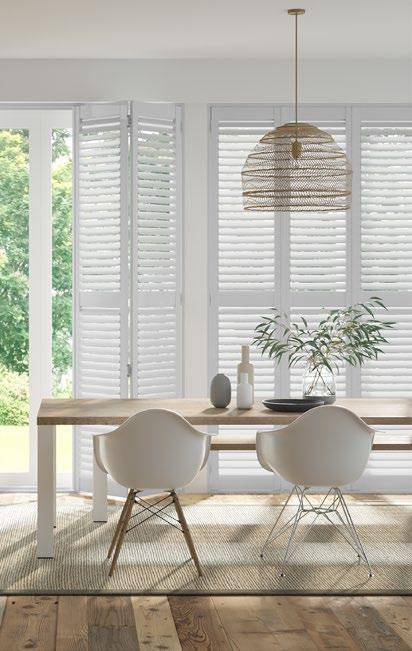
7 minute read
INTERIORS

www.jysk.co.uk www.bykoket.com www.blinds-2go.co.uk
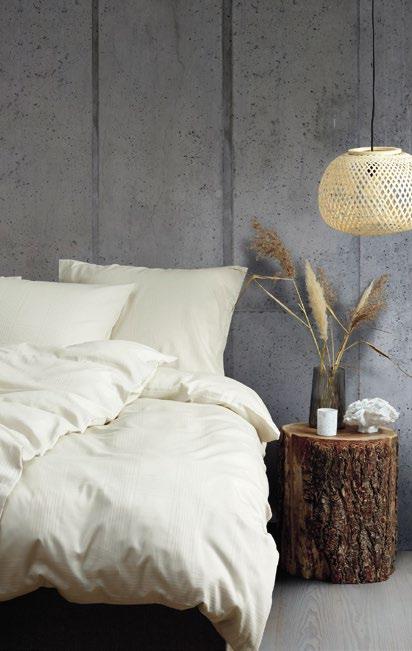
Marshmallow
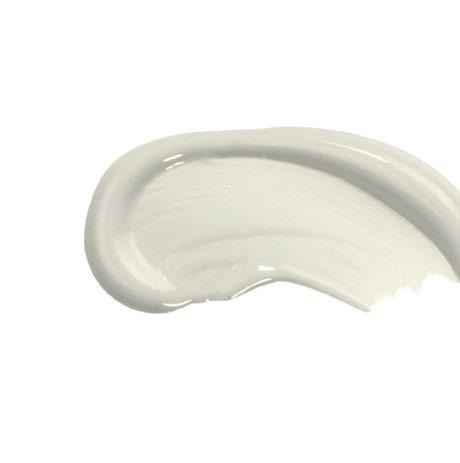
If you think choosing a white paint for your room will be easy, think again! With over 900 shades of white to select from, you may well find the task a bit daunting. White is a timeless option that provides a fresh blank canvas, against which you can showcase all your art, accessories and furniture, so it’s well worth putting in the effort to get the tone right. You are not alone if you’ve previously looked at a white room and thought how unimaginative and effortless the design is; but to get a white room right it will have been incredibly well curated, with much time and effort employed to keep the space from looking clinical and stark.
One of my favourite white paints is Marshmallow. Marshmallow provides a sense of serenity and relaxation. As the importance of wellbeing becomes increasingly significant in our lives, this hue is ideal for bringing a tranquil and calm feeling into your home. Sanderson has a particular paint called ‘Marshmallow Snow’. It is a creamy soft neutral that will uplift and brighten your scheme, but do not confuse it with Wilko’s Marshmallow Silk which is pretty in pink and far from the neutral base recommended here.
Marshmallow Snow is a pure and peaceful colour ideal for so many surfaces. It has a milky-hued foundation that provides the perfect blank canvas for creating a striking space that never grows old. It is great for children’s bedrooms or playrooms where it performs strongly as a neutral or base paint. It is also light reflecting. If you’re keen to have a paint that maximises the amount of light within a room then look at your chosen paint colour’s Light Reflectance Value (LRV). Paints are graded on a scale of 1-100 with 100 being pure white and 1 being black. The highest I found for Marshmallow was 87, which is excellent in terms of light reflectance.
Due to Marshmallow’s high reflectivity, most light tends to be reflected away whilst absorbing only a little, which is normally seen as a tint. This is an important consideration in a north or south facing room. Marshmallow will
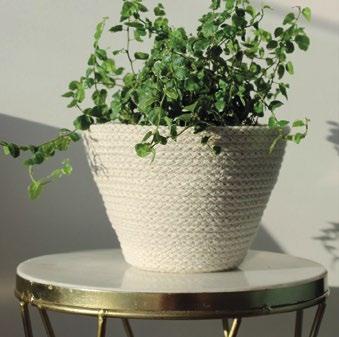
Rosie Kinsella Interior Designer 01604 751262 www.millsandkinsella.com
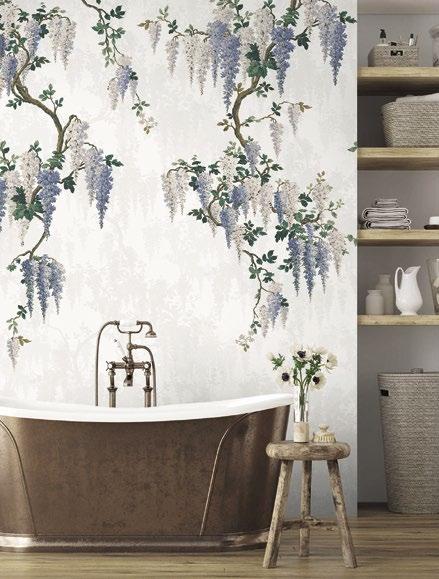
www.victorycolours.co.uk
appear crisper and cleaner in a north facing room and slightly yellower and creamier in a south facing one where light absorption will be at its greatest.
White should be seen as your secret tool. The ideal device for drawing attention to other things. If you paint your space white, then the other features in the room will become more noticeable. Whether that’s the exposed brick or woodwork or the art
www.orchardhomeinteriors.co.uk
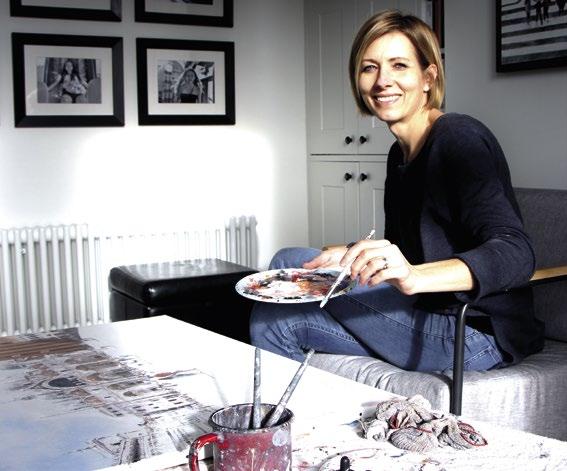
or your furniture. Maybe it’s the way the light comes in through the windows, or the licking of the flames from your open fire or log burner? Each important feature in your room will be given prominence if the walls are white.
A space can feel nice and bright and light just with its white paint, but it is the textures in the room that will make it feel warm and inviting. If you feel your room needs warming up then go natural or aged, introduce items with a story, or anything from the outside environment. Plants, wood, marble, brick, stone, aged leather, velvet, sheepskins, cowhides, or blankets. These are all ways to add interest in a soft and characterful way without ruining the light enhancing marshmallow effect.
If you fancy trying a bit of colour, then add a splash where you want to add some focus. A tall wall for a painting, a comfy corner of your sofa for a cushion, a lovely colourful vase in an alcove. The great thing is that when you’ve chosen white as your backdrop then any colour goes, as every colour coordinates and nothing needs to be ruled out.
And the best thing about white? It’s so practical!! Ignore those who fret about it looking dirty quickly. White is the easiest surface to clean, wash, bleach or re-paint so white enables you to relax and live your life. A mark, a graze, a dent, a chip… white is oh so easy to repair.
Since the introduction of titanium dioxide into domestic paints in the 20th century, brilliant white finishes have become possible and safe1. Throughout history, from period homes through to shiny, modern, grand, architectural spaces and Scandinavian minimalism, white has been a leading force in impactful interiors. Whilst times and tastes may change, the use of white in providing the perfect backdrop to your schemes will undoubtedly endure.
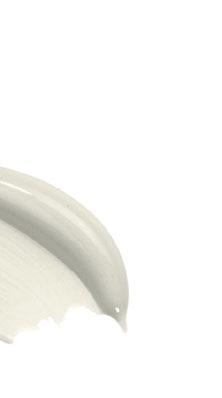
1www.tdma.info
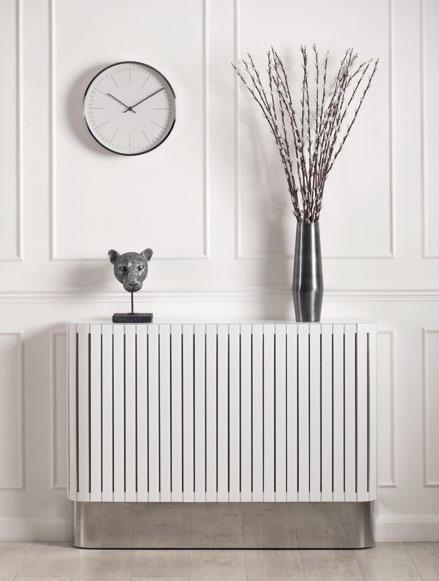
Interview with
Alena Carvalho
This month, the gallery chatted with artist Alena Carvalho to get an insight into her work and journey as an artist. Born and raised in Prague, Alena has lived and worked in Buckinghamshire for over 20 years.
Hi Alena, can you tell us about your early artistic influences growing up in Prague and how you became an artist?
As a child, I was always making things or drawing, but I actually wanted to be an animator, back in the pre-digital age when everything was made by hand. I got a chance to visit the department of animated film in the film studios in Prague and I was totally enchanted by the world of poseable puppets, miniature sets and tiny props. It never even crossed my mind that I could become a painter. It wasn’t until years later when my two daughters started school that I had a bit more time on my hands and started to paint. I was very lucky to get signed up by an art publisher very early on, but it still took me a while to call myself an artist/painter when people asked me what I did for living, as it just sounded too good to be true. 10 years down the line, I am still not taking it for granted that I could do this for the rest of my life, although I can’t imagine wanting to do anything else.
How would you describe your style and what type of paint do you enjoy working with?
That’s a tricky question, Impressionistic realism if there is such a style? I like to portrait my objects/subjects fairly realistically, but my main objective is to capture the atmosphere, the light, the mood. I like to put down the structure of the image first and then let loose. I use acrylic paint, ink and ink pencils, as they are so versatile and they dry fast, so that you can finish a painting in one sitting (well, not that it happens very often!). I started off with watercolour and ink, but as my paintings grew larger in scale, I swapped paper for canvas and acrylic became my favourite medium.
Your cityscapes are stunning, what drew you to focusing on cities and architecture?
Ahh, thank you! I love travelling, I love city breaks and city walks and I love my ‘hunting’ trips for inspiration with my camera. I can walk around London for hours, especially on a sunny or a rainy day, seeking interesting compositions and changing light.
I grew up in Prague, so I was surrounded by beautiful architecture whichever way I looked. But what I love about painting cityscapes is not just the buildings – they provide a backdrop for the life that goes on and all the changeable elements – people, buses, trams, bikes, weather, light. I could happily paint the same corner of London dozens of times, as the scene would offer something different each time.
What does a typical working day look like for you?
Alarm goes off as early as 6 am on school days, but I don’t usually start painting until about 10 am, as I like to get all the chores out of the way first thing so that I can fully immerse myself into painting without any distraction for the rest of the day. I like listening to audiobooks whilst I paint as it helps me work more spontaneously and not over think my paintings. I usually finish at dinner time but quite often I pop back into the studio ‘just for five minutes to finish this and that’ and before I know it, it’s 11 pm! Some days I spend hours going through photos, choosing what to paint next, other days I am prepping boards, framing or taking pictures of my finished paintings and doing admin, so no two days are ever the same.
What is the best thing about being an artist? Do you have advice for budding artists?
Being creative every day, learning or trying something new every day and the unpredictability of what the result at the end of each day might be. My advice to any young artist is don’t be afraid to experiment and to put your work out there – you never know where it might lead.
Gemma Davey Gallery Correspondent www.therosegallery.co.uk









